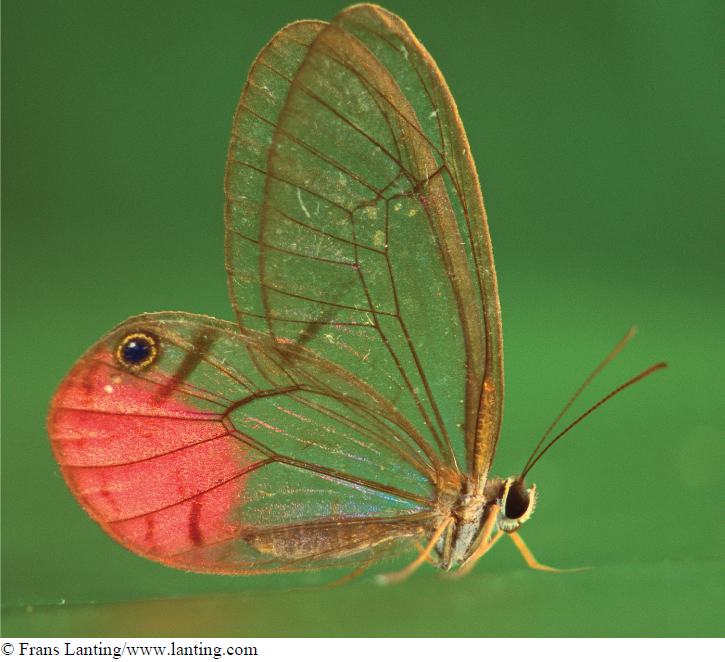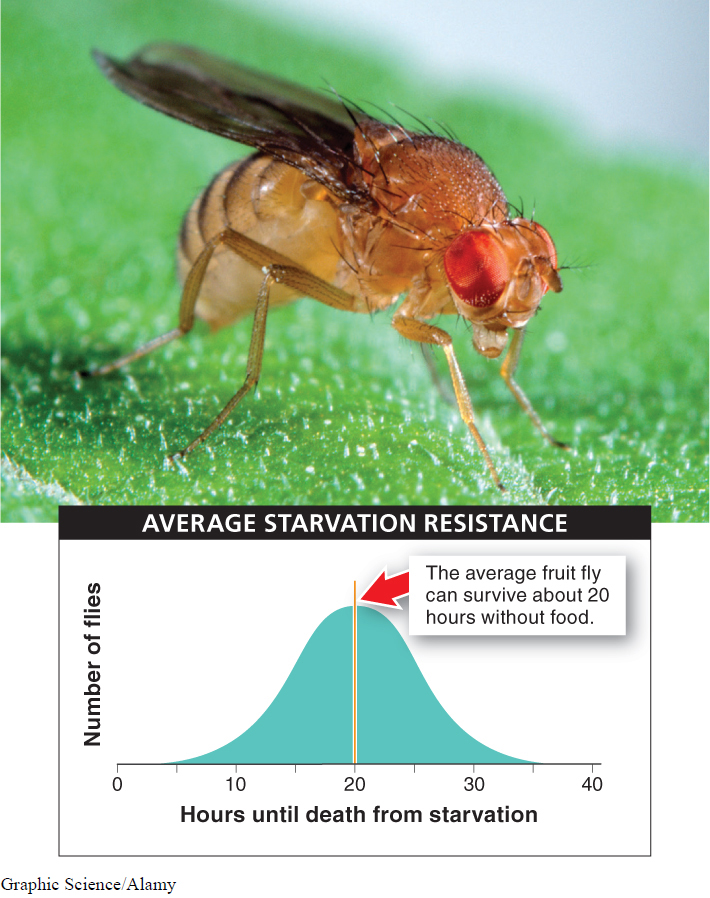8.1: Evolution is an ongoing process.

What’s the longest that you’ve ever gone without food? Twenty-
Each hour without food is even more dangerous when you’re tiny. A fruit fly, for example, can only last just under a day—

First, start with a population of 5,000 ordinary fruit flies. In biology, the term population means a group of organisms of the same species living in a particular geographic region. The region can be a small area such as a test tube or a large area such as a lake. In your experiment, your population occupies a cage in your laboratory.
From these 5,000 fruit flies, you will choose only the 20% of flies that can survive the longest without food:
- 1. Remove the food from the cage with the population of 5,000 flies.
- 2. Wait until 80% of the flies have starved to death, then put a container of food into the cage.
- 3. After the surviving flies eat, they’ll have the energy to reproduce. When they do, collect and transfer the eggs to a new cage.
317
You can now start a new generation consisting only of the offspring of those fruit flies able to survive without food for the longest amount of time. When these eggs hatch, the flies show increased resistance to starvation. The average fly in the new generation can live for about 23 hours without food. And again, some of the new flies survive for more than 23 hours, some for less (FIGURE 8-2).

What if you kept repeating these three steps? Start each new generation using eggs only from the fruit flies in the top 20% of starvation resistance. After five generations, would the average starvation-
After 60 generations of allowing only the flies that are best at surviving without food to reproduce, how has the population changed? Amazingly, the average fly in the resulting population can survive for more than 160 hours without food (see Figure 8-
What happened? In a word: evolution. That is, there was a genetic change in the population of fruit flies living in the cage. In the generation 60 population, even the fly with the worst starvation resistance is more than seven times better at resisting starvation than the best fly in the original population. Later in this chapter we’ll discuss the mechanisms by which evolution can occur, but, in short, in this situation it is the consequence of certain individual organisms in a population being born with characteristics that enable them to be more likely to survive and to reproduce than other individuals in the population. In this experiment, the 20% of fruit flies that were the most starvation resistant had a huge reproductive advantage over less starvation-
318
This experiment answers a question that is sometimes perceived as complex or controversial: does evolution occur? The answer is an unambiguous yes. We can watch it happen in the lab whenever we want. Recall from our discussion of scientific thinking (see Chapter 1) that for us to have confidence in our hypotheses about anything, they must be testable and reproducible. To be certain of the results in the fruit fly study, researchers carried out the starvation-
In this experiment we changed starvation resistance in fruit flies, but what if we used dogs instead of flies and, instead of allowing the most starvation-
In this chapter, we examine how evolution takes place and the types of changes it can cause in a population. We also review the five primary lines of evidence indicating that evolution and natural selection are processes that help us clarify all other ideas and facts in biology. Let’s begin our investigation with a look at how the idea of evolution by natural selection was developed. This knowledge will help us better understand why evolution by natural selection is regarded as one of the most important ideas in human history, why it is sometimes considered a dangerous idea, and why it generates emotional debate.
TAKE-HOME MESSAGE 8.1
The characteristics of the individuals present in a population can change over time. We can observe such change in nature and can even cause it to occur.
Define evolution. Explain how the experiment on starvation resistance in fruit flies demonstrates evolution in action.
319